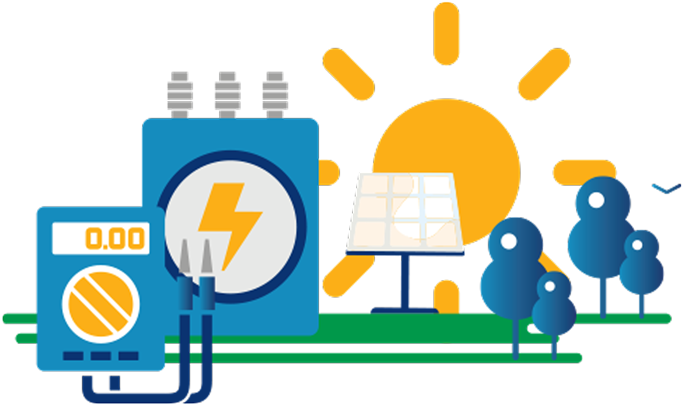TECHNOLOGY
A solar battery is similar to a water tank. Energy is stored, much like water in the water tank, in the batteries which can later be used when there is a shortage.

A solar battery is a device that stores energy that is generated by a solar energy system and is charged by the solar panels . The stored electricity is consumed after sundown, during energy demand peaks, or during a power outage and are commonly used for all purposes- residential, commercial and industrial as well.
Residential properties will take first priority for solar power as most of the solar energy is generated to provide electricity to the public. The electricity produced by the panels will directly feed the home’s main electrical panel and power everything in the home. Without a battery, this extra energy would flow back to the grid through the process known as net metering. In effect, this extra power would “spin the meter backwards” and provide the homeowner with bill credit.
Alternating Current (AC) Battery
An AC battery accepts incoming AC powerand by using a built-in inverter, converts the AC power to DC power, which then charges the battery. When the battery dispenses power to the home, the inverter then converts the DC power coming from the battery pack back into AC, which then feeds into the home.
Direct Current (DC) Batteries
DC batteries do not have a built-in inverter. They are charged directly from DC power. This requires a specialized inverter that can pass DC power produced by the solar panels directly into the battery without inverting it to AC first. When the battery needs to power the home, the DC power from the power is fed into the external solar inverter, where it’s converted into AC power that then powers the home.
Lead Acid
For several years, lead-acid batteries have been used as a reliable energy supply for off-grid areas. They are typically deep-cycle and inexpensive . Lead-acid batteries are attributed to high power and discharge current but low energy. They take long to charge completely – upto 14 hours.
Two types of lead-acid that are commonly used for solar panels: flooded and valve-regulated lead-acid (VRLA) batteries.
Lithium-Ion
Lithium-ion batteries have a unique voltage range and response to charging (two stages as opposed to the conventional three). They can be charged with a voltage regulator charge controller. Although lithium-ion batteries have a low self-discharge, they do not benefit from long-term charging.
This kind of solar battery is generally low maintenance, and has high specific energy with a long lifespan. Compared to lead-acid, lithium batteries usually cost more . In addition, they may require a protection circuit to regulate the current and voltage.
Nickel Cadmium
Nickel-cadmium batteries are generally characterized by low maintenance and tolerance to a wide range of temperatures. They come in different sizes and performance levels, with long shelf life. However, this kind of solar battery has a high discharge rate and low energy density, which makes it a relatively poor choice for permanent off-grid supply.
Sodium Nickel Chloride
Also called ZEBRA cell, the sodium nickel chloride battery has high recyclability with no emission at all. It requires no ventilation